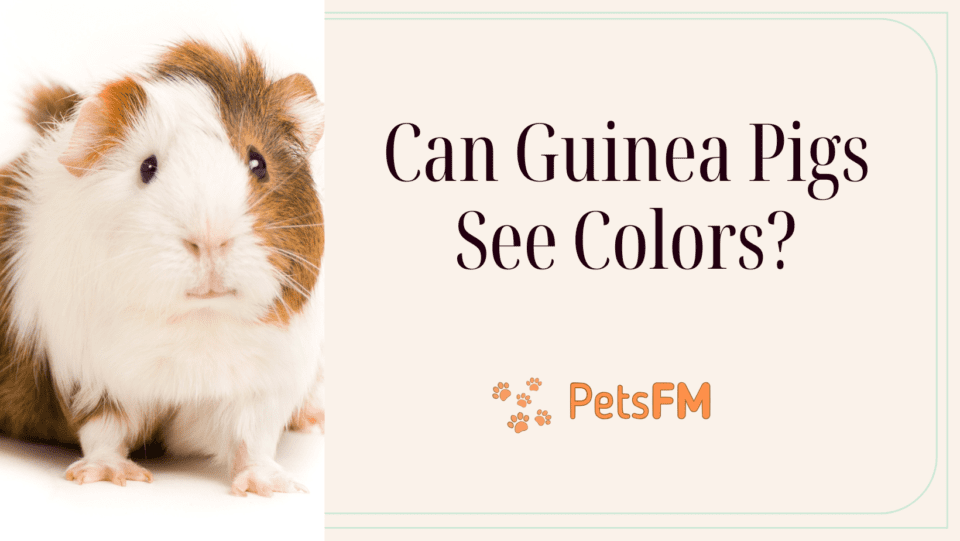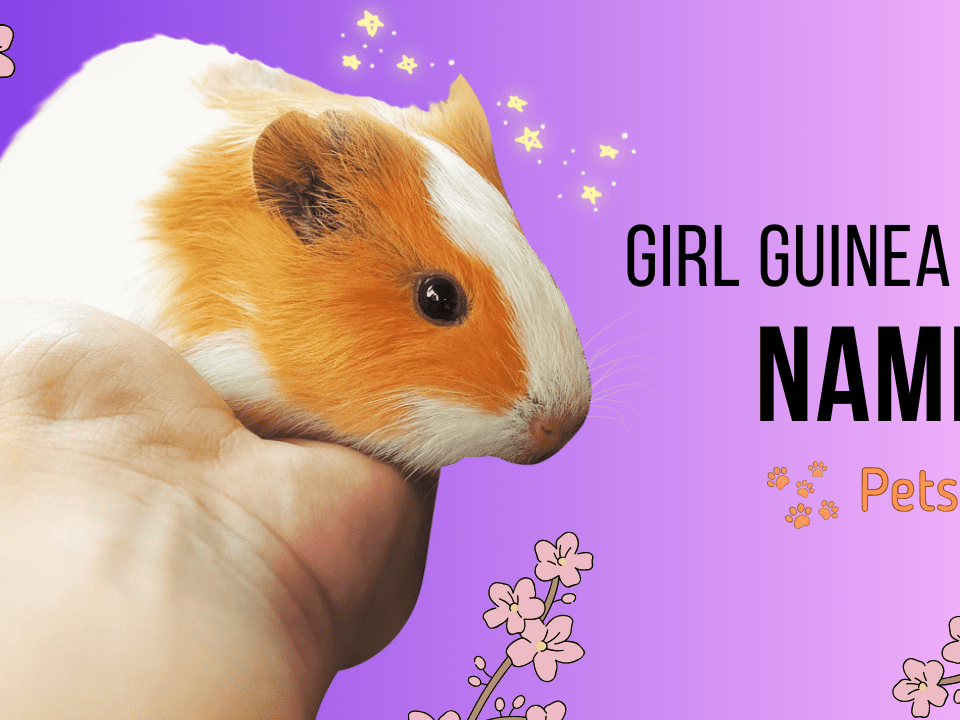


Can Cats Kill Snakes? (Venomous & Non-Venomous Snakes)
March 5, 2024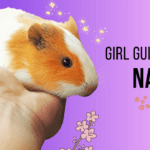


Girl Guinea Pig Names (Cute, Cuddly, Exotic, Unique, etc.)
March 5, 2024Imagine watching the world in a kaleidoscope of colors you’ve never seen. This is how guinea pigs experience their surroundings, with a unique perspective different from ours.
They’ve been cherished as pets for centuries, known for their playful personalities and expressive sounds.
But beyond their cute exterior lies a sensory world rich in detail and color. As we delve into the vibrant world of guinea pigs, we will learn how they see color, offering us a glimpse into their perception of the universe around them.
Also, Read: How Big Can Guinea Pigs Get? (Different Breeds Compared)
Can guinea pigs see color?
Yes, guinea pigs can see color. Unlike some pets, they possess color vision thanks to cone cells in their eyes. This allows them to distinguish between colors, enhancing their ability to navigate and interact with their environment.
How do guinea pigs see color?
Color vision in animals, including guinea pigs, is primarily facilitated by two types of photoreceptor cells in the retina: rods and cones. Rods are responsible for vision in low light conditions and do not detect color, while cones are active in brighter light and enable color vision. The presence and distribution of these cone cells determine an animal’s ability to perceive different colors.
Guinea pigs have rods and cones in their retinas, allowing them to see in dim and well-lit environments. However, their eyes are structured differently from human eyes regarding the types and distributions of cone cells, which affects their color perception.
While humans typically have three types of cone cells enabling them to see a wide range of colors (trichromatic vision), guinea pigs are believed to have a dichromatic vision system. This means they likely have two types of cone cells, making them capable of seeing colors, but possibly not with the same range or intensity humans experience.
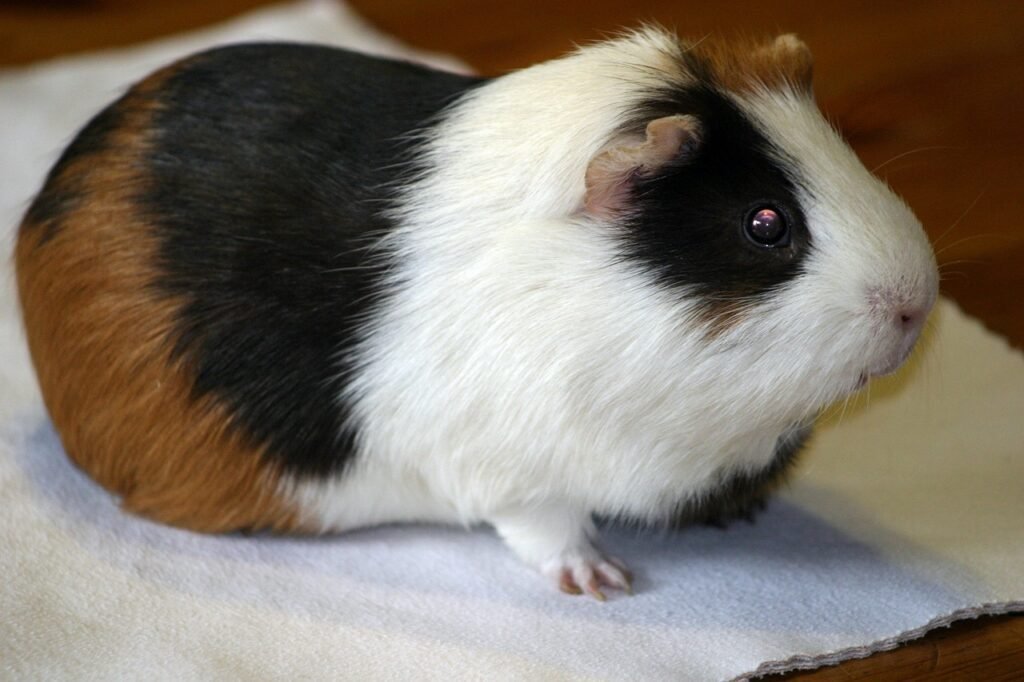

Guinea Pig
How do guinea pigs perceive their environment through their colored vision?
Guinea pigs perceive their environment in a way significantly influenced by their color vision, though it differs from that of humans and other common pets. Their dichromatic vision, which likely emphasizes greens and blues, is crucial in their daily activities and survival strategies.
1: Finding Food
- Color vision is essential for guinea pigs, especially in the wild, where identifying edible vegetation is a matter of survival.
- The ability to distinguish green hues helps them select the freshest leaves and stems, which are crucial for their diet.
- While domestic guinea pigs rely less on this ability due to provided diets, their attraction to colorful vegetables and fruits suggests that color still plays a role in their food preferences.
2: Recognizing Other Guinea Pigs
- While the extent to which guinea pigs use color vision to recognize each other is less clear, movement and scent likely play more significant roles in their social interactions.
- However, subtle differences in coloration might help them distinguish between individuals in their group, aiding in forming social bonds and hierarchies.
3: Interacting with Their Environment
- Guinea pigs use color vision to navigate their surroundings, identifying safe hideouts and avoiding potential dangers.
- The contrast between greenery and the environment’s other colors could help them assess hiding spots and escape routes when they feel threatened.
What colors do guinea pigs see the most?
Guinea pigs are believed to see colors in the blue and green spectrum more vividly. This is due to their dichromatic vision, which typically includes photoreceptors sensitive to these parts of the light range.
Scientific Findings and Expert Opinions
Scientific research into the specific colors that guinea pigs can see most clearly is somewhat limited. Still, based on what is known about the vision of similar mammals and the basic principles of dichromatic vision, it’s possible to make educated guesses.
Studies on animal color vision suggest that creatures with dichromatic vision, like guinea pigs, are particularly attuned to blues and greens. This would naturally influence their behavior and preferences, as these colors are prominent in their natural environments for identifying food and shelter.
There has been less research on guinea pigs than on other animals, such as birds and primates, who have been more thoroughly studied for color vision capabilities.
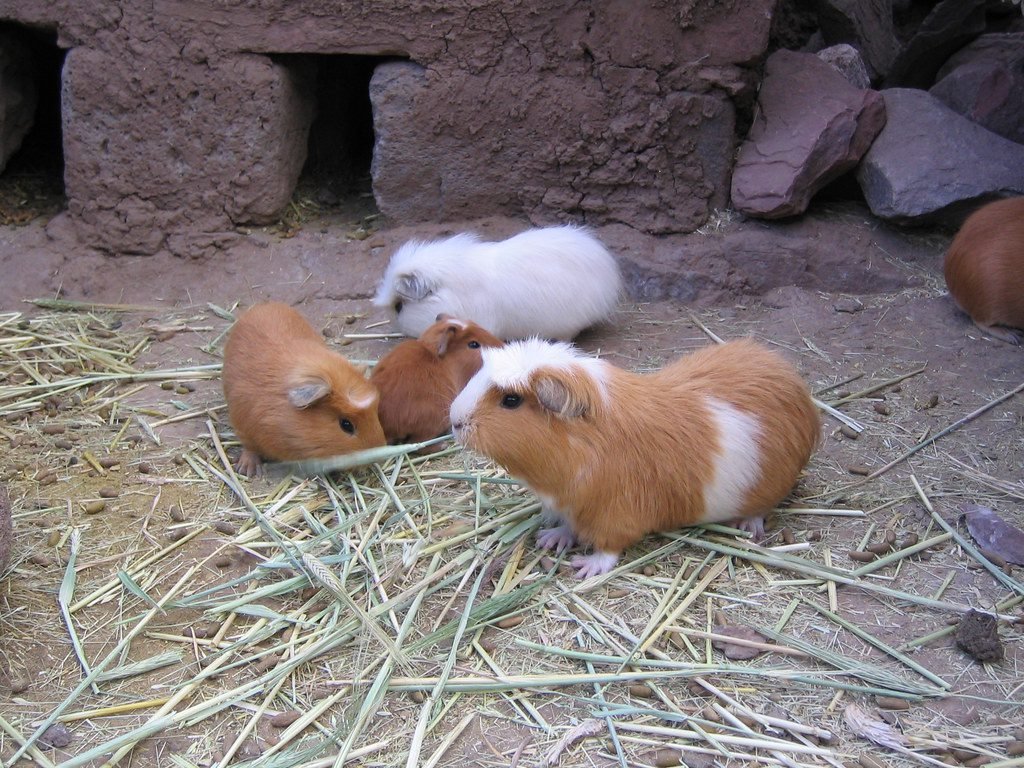

Multiple Guinea Pigs
How does colored vision affect a guinea pig’s behavior?
Color vision in guinea pigs does influence their behavior and preferences, although their reactions to color are subtle and can vary among individuals.
Here are some observed behaviors and implications for their care:
- Toy Selection: Guinea pigs may prefer toys in colors they can see more clearly, such as blues and greens. Offering toys in these colors might encourage more interaction and play, contributing to their physical activity and mental stimulation.
- Bedding Choices: While the color of bedding may not directly impact a guinea pig’s comfort, visually stimulating colors that align with their color vision spectrum could make their environment more engaging. However, the material’s comfort and safety are paramount.
- Food Preferences: There’s anecdotal evidence that guinea pigs may show more interest in brightly colored foods, although this interest is likely more related to smell and taste than color. However, presenting food in colorful bowls that contrast with their food may attract their attention more effectively.
- Reactions to Colored Objects: Guinea pigs might react differently to objects of various colors in their environment, showing curiosity or caution. Observing your guinea pig’s responses to different colored things can provide insights into their preferences and help tailor their environment to their likes.
Are there differences in color vision among guinea pigs?
Differences in color vision among guinea pigs can be influenced by various factors, including breed, age, and health.
Here’s a look at how these factors might affect guinea pigs’ color vision and some insights on tailoring care:
Breed Variations
- While there’s limited research on breed-specific differences in guinea pig color vision, its genetic diversity could lead to variations in sensory capabilities, including vision.
- However, any breed-related differences in color vision are likely subtle and not as pronounced as differences in behavior or coat type.
Age-related Changes
- Age can impact the sensory abilities of all animals, including guinea pigs. Just as humans experience changes in vision over time, guinea pigs may also see a decline in sensory acuity, including color perception, as they age.
- This could affect their interaction with their environment, showing less interest in colored toys or food items.
- Younger guinea pigs might have more acute color vision, making them more responsive to colorful environments and objects.
Health Impacts
- Health issues, particularly those affecting the eyes, can influence color vision.
- Conditions such as cataracts or other ocular diseases could impair vision, including color perception, making it more challenging for affected guinea pigs to navigate their environment or show interest in colored objects.
- A healthy diet rich in vitamins A and C can support eye health and potentially maintain optimal color vision.
Conclusion
In exploring the vibrant world of guinea pigs, we’ve uncovered the nuances of their color vision, revealing how it shapes their interaction with the environment. From choosing toys to tailoring habitats, understanding their unique sensory perspective enhances our bond and care.
Let’s embrace this knowledge to enrich our guinea pigs’ lives, deepening our connection with these charming companions through a shared, colorful world.
